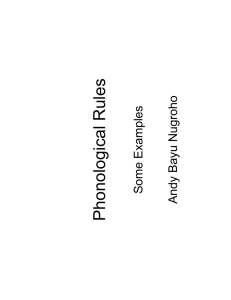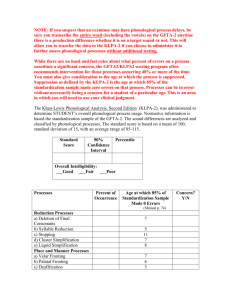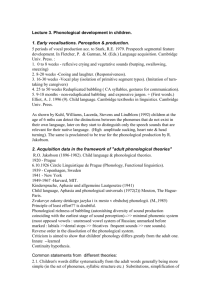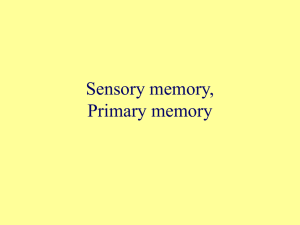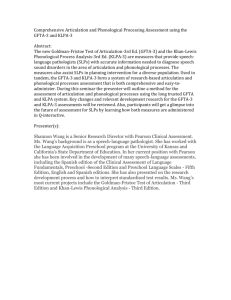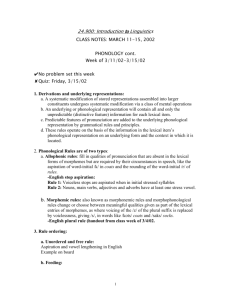Phonological priming in deaf signers: ... phonological overlap in Sign Language of the Netherlands (English)
advertisement
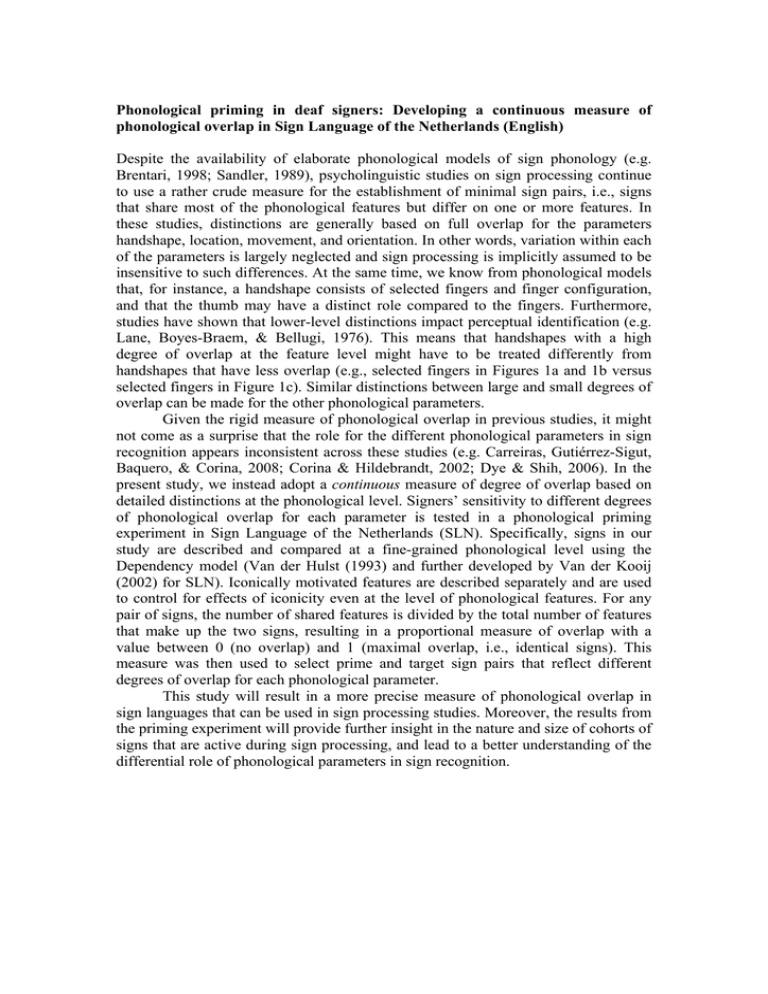
Phonological priming in deaf signers: Developing a continuous measure of phonological overlap in Sign Language of the Netherlands (English) Despite the availability of elaborate phonological models of sign phonology (e.g. Brentari, 1998; Sandler, 1989), psycholinguistic studies on sign processing continue to use a rather crude measure for the establishment of minimal sign pairs, i.e., signs that share most of the phonological features but differ on one or more features. In these studies, distinctions are generally based on full overlap for the parameters handshape, location, movement, and orientation. In other words, variation within each of the parameters is largely neglected and sign processing is implicitly assumed to be insensitive to such differences. At the same time, we know from phonological models that, for instance, a handshape consists of selected fingers and finger configuration, and that the thumb may have a distinct role compared to the fingers. Furthermore, studies have shown that lower-level distinctions impact perceptual identification (e.g. Lane, Boyes-Braem, & Bellugi, 1976). This means that handshapes with a high degree of overlap at the feature level might have to be treated differently from handshapes that have less overlap (e.g., selected fingers in Figures 1a and 1b versus selected fingers in Figure 1c). Similar distinctions between large and small degrees of overlap can be made for the other phonological parameters. Given the rigid measure of phonological overlap in previous studies, it might not come as a surprise that the role for the different phonological parameters in sign recognition appears inconsistent across these studies (e.g. Carreiras, Gutiérrez-Sigut, Baquero, & Corina, 2008; Corina & Hildebrandt, 2002; Dye & Shih, 2006). In the present study, we instead adopt a continuous measure of degree of overlap based on detailed distinctions at the phonological level. Signers’ sensitivity to different degrees of phonological overlap for each parameter is tested in a phonological priming experiment in Sign Language of the Netherlands (SLN). Specifically, signs in our study are described and compared at a fine-grained phonological level using the Dependency model (Van der Hulst (1993) and further developed by Van der Kooij (2002) for SLN). Iconically motivated features are described separately and are used to control for effects of iconicity even at the level of phonological features. For any pair of signs, the number of shared features is divided by the total number of features that make up the two signs, resulting in a proportional measure of overlap with a value between 0 (no overlap) and 1 (maximal overlap, i.e., identical signs). This measure was then used to select prime and target sign pairs that reflect different degrees of overlap for each phonological parameter. This study will result in a more precise measure of phonological overlap in sign languages that can be used in sign processing studies. Moreover, the results from the priming experiment will provide further insight in the nature and size of cohorts of signs that are active during sign processing, and lead to a better understanding of the differential role of phonological parameters in sign recognition. References Brentari, D. (1998). A prosodic model of sign language phonology. Cambridge, MA: MIT Press. Carreiras, M., Gutiérrez-Sigut, E., Baquero, S., & Corina, D. P. (2008). Lexical processing in Spanish Signed Language (LSE). Journal of Memory and Language, 58(1), 100–122. Corina, D. P., & Hildebrandt, U. C. (2002). Psycholinguistic investigations of phonological structure in ASL. In R. P. Meier, K. Cormier, & D. Quinto-Pozos (Eds.), Modality and structure in signed and spoken languages (pp. 88–111). Cambridge: Cambridge University Press. Dye, M. W. G., & Shih, S. (2006). Phonological priming in British Sign Language. In D. H. Whalen & C. T. Best (Eds.), Papers in Laboratory Phonology (Vol. 8, pp. 241–263). Berlin: Mouton de Gruyter. Lane, H., Boyes-Braem, P., & Bellugi, U. (1976). Preliminaries to a distinctive feature analysis of handshapes in American Sign Language. Cognitive Psychology, 8(2), 263– 289. Sandler, W. (1989). Phonological representation of the sign: Linearity and nonlinearity in American Sign Language. Dordrecht: Foris. Van der Hulst, H. (1993). Units in the analysis of signs. Phonology, 10(2), 209–241. Van der Kooij, E. (2002). Phonological categories in Sign Language of the Netherlands: The role of phonetic implementation and iconicity. Utrecht: LOT Dissertation Series 55. Figure 1a Figure 1b Figure 1c


